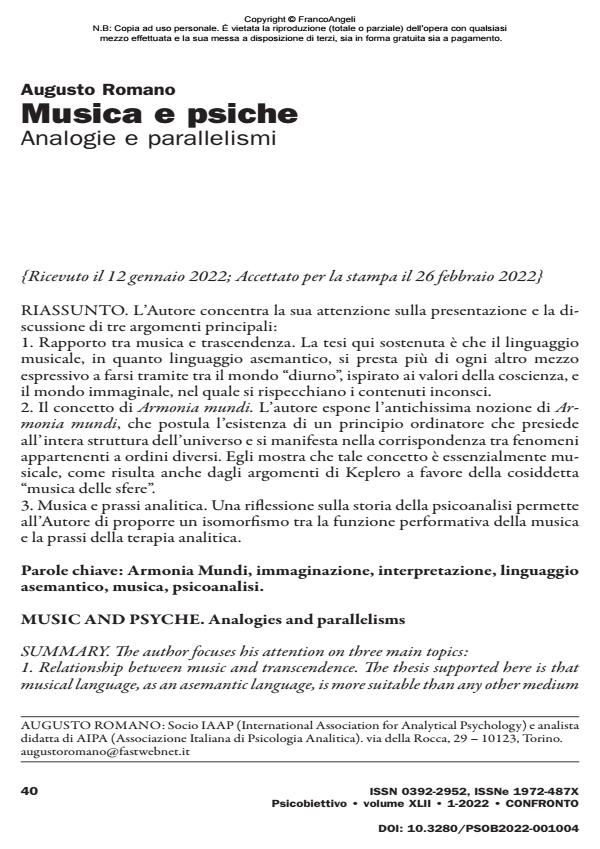Music and psyche. Analogies and parallelisms
Journal title PSICOBIETTIVO
Author/s Augusto Romano
Publishing Year 2022 Issue 2022/1
Language Italian Pages 19 P. 40-58 File size 674 KB
DOI 10.3280/PSOB2022-001004
DOI is like a bar code for intellectual property: to have more infomation
click here
Below, you can see the article first page
If you want to buy this article in PDF format, you can do it, following the instructions to buy download credits

FrancoAngeli is member of Publishers International Linking Association, Inc (PILA), a not-for-profit association which run the CrossRef service enabling links to and from online scholarly content.
The author focuses his attention on three main topics: 1. Relationship between music and transcendence. The thesis supported here is that musical language, as an asemantic language, is more suitable than any other medium expressive to be an intermediary between the "diurnal" world, inspired by the values of conscience, and the imaginal world, in which unconscious contents are reflected. 2. The concept of Harmonice Mundi. The author exposes the ancient notion of Harmonice Mundi, which postulates the existence of an ordering principle that presides over the entire structure of the universe and manifests itself in the correspondence between phenomena belonging to different orders. He shows that this concept is essentially musical, as also apparent from Kepler’s arguments in favor of the so-called "Music of the spheres". 3. Music and analytic practice. A reflection on the history of psychoanalysis allows the Author to propose an isomorphism between the performative function of music and the practice of analytic therapy.
Keywords: Harmonice Mundi, imagination, interpretation, asemantic language, music, psychoanalysis.
Augusto Romano, Musica e psiche. Analogie e parallelismi in "PSICOBIETTIVO" 1/2022, pp 40-58, DOI: 10.3280/PSOB2022-001004